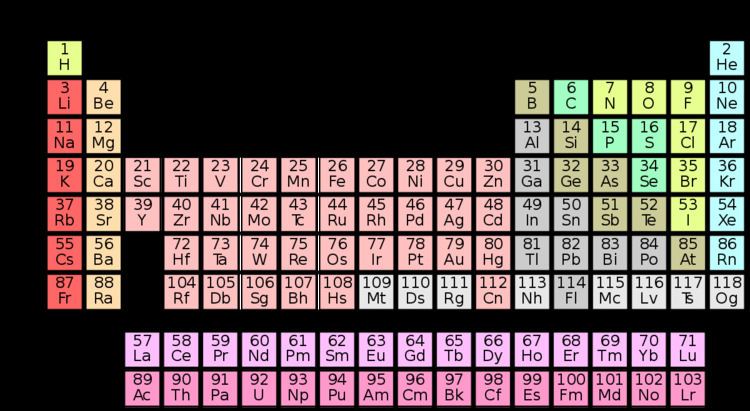 | ||
In relation to the chemical elements, a symbol is a code for a chemical element. Many functional groups has their own chemical symbol, e.g. Ph for the phenyl group, and Me for the methyl group. Chemical symbols for elements normally consist of one or two letters from the Latin alphabet, but can contain three when the element has a systematic temporary name (as of March 2017, no discovered elements have such a name), and are written with the first letter capitalized.
Contents
- Symbols for chemical elements
- Symbols and names not currently used
- Pictographic symbols
- Symbols for named isotopes
- Other symbols
- References
Earlier chemical element symbols stem from classical Latin and Greek vocabulary. For some elements, this is because the material was known in ancient times, while for others, the name is a more recent invention. For example, "He" is the symbol for helium (New Latin name, not known in ancient Roman times), "Pb" for lead (plumbum in Latin), and "Hg" for mercury (hydrargyrum in Greek). Some symbols come from other sources, like "W" for tungsten (Wolfram in German, not known in Roman times).
Temporary symbols assigned to newly or not-yet synthesized elements use 3-letter symbols based on their atomic numbers. For example, "Uno" was the temporary symbol for hassium (element 108) which had the temporary name of unniloctium.
Chemical symbols may be modified by the use of prepended superscripts or subscripts to specify a particular isotope of an atom. Additionally, appended superscripts may be used to indicate the ionization or oxidation state of an element. They are widely used in chemistry and they have been officially chosen by the International Union of Pure and Applied Chemistry. There are also some historical symbols that are no longer officially used.
Attached subscripts or superscripts specifying a nucleotide or molecule have the following meanings and positions:
In Chinese each chemical element has a dedicated character, usually created for the purpose (see Chemical elements in East Asian languages). However, Latin symbols are also used, especially in formulas.
A list of current, dated, as well as proposed and historical signs and symbols is included here with its signification. Also given is each element's atomic number, atomic weight or the atomic mass of the most stable isotope, group and period numbers on the periodic table, and etymology of the symbol.
Hazard pictographs are another type of symbols used in chemistry.
Symbols for chemical elements
Antimatter atoms are denoted by a bar above the symbol for their matter counterpart, so e.g. H is the symbol for antihydrogen.
Symbols and names not currently used
The following is a list of symbols and names formerly used or suggested for elements, including symbols for placeholder names and names given by discredited claimants for discovery.
Pictographic symbols
The following is a list of pictographic symbols employed to symbolize elements known since ancient times (for example to the alchemists). Not included in this list are symbolic representations of substances previously called elements (such as certain rare earth mineral blends and the classical elements fire and water of ancient philosophy) which are known today to be multi-atomic. Also not included are symbolic representations currently used for elements in other languages such as the Chinese characters for elements. Modern alphabetic notation was introduced in 1814 by Jöns Jakob Berzelius.
Symbols for named isotopes
The following is a list of isotopes of elements given in the previous tables which have been designated unique symbols. By this it is meant that a comprehensive list of current systematic symbols (in the uAtom form) are not included in the list and can instead be found in the Isotope index chart. The symbols for the named isotopes of hydrogen, deuterium (D) and tritium (T) are still in use today. Heavy water and other deuterated solvents are commonly used in chemistry, and it is convenient to use a single character rather than a symbol with a subscript in these cases. The practice also continues with tritium compounds. When the name of the solvent is given, a lowercase d is sometimes used. For example, d6-benzene and C6D6 can be used instead of [2H6]C6H6.
The symbols for isotopes of elements other than hydrogen are no longer in use within the scientific community. Many of these symbols were designated during the early years of radiochemistry, and several isotopes (namely those in the actinium decay family, the radium decay family, and the thorium decay family) bear placeholder names using the early naming system devised by Ernest Rutherford.
Other symbols
See also Skeletal formula § Pseudoelement symbols.General:
From organic chemistry:
Exotic atoms:
